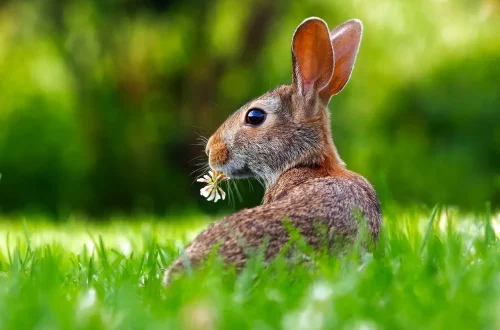
Essential Guide to Russian Tortoise Food for Optimal Health
The Russian tortoise, known for its hardy nature and charming personality, is a popular choice among reptile enthusiasts and pet owners alike. This species, native to the arid regions of Central Asia, has adapted to a variety of environments, making it a resilient companion for those willing to provide the right care. One of the most crucial aspects of maintaining a healthy Russian tortoise is ensuring a balanced diet. Unlike mammals, tortoises have unique dietary needs that are essential for their growth, longevity, and overall well-being.
Understanding what constitutes a nutritious diet for your Russian tortoise can seem daunting, especially with the myriad of food options available. A proper diet not only helps in keeping your tortoise healthy but also plays a significant role in preventing various health issues, including obesity, metabolic bone disease, and shell deformities. As a responsible pet owner, it is imperative to educate yourself about the specific dietary requirements of your tortoise. This includes knowing what types of greens, vegetables, and supplements are best suited for their needs.
This guide aims to unravel the complexities of Russian tortoise nutrition, providing you with the essential knowledge to ensure your pet thrives. With the right approach to feeding, you can create a diet plan that supports optimal health, encourages natural behaviors, and enhances the quality of life for your beloved tortoise.
Understanding the Natural Diet of Russian Tortoises
To create an effective diet plan for your Russian tortoise, it is important to first understand their natural eating habits. In the wild, these tortoises primarily consume a variety of grasses, leafy greens, and weeds. Their diet is high in fiber and low in protein, which reflects their herbivorous nature. In their natural habitat, Russian tortoises forage for food, which helps to keep their beaks and shells in good condition.
One of the most crucial components of their natural diet is the high fiber content. Fiber aids in digestion and helps prevent gastrointestinal issues, which are common in tortoises that consume too much protein or low-quality food. Therefore, when selecting foods for your pet, prioritize fibrous greens and plants.
In addition to fiber, hydration is also an essential aspect of a Russian tortoise’s diet. In the wild, they obtain much of their moisture from the plants they consume. It is important to provide fresh water daily and ensure that the diet includes succulent greens that can help keep them hydrated. Foods such as collard greens, dandelion greens, and hibiscus leaves are excellent choices.
Avoid feeding your Russian tortoise high-protein foods, like animal protein or commercial tortoise pellets that contain meat. While some tortoise pellets are designed to provide a balanced diet, they often contain high protein levels that can lead to health problems. Instead, focus on providing a variety of fresh greens and occasional vegetables, ensuring that you replicate their natural diet as closely as possible.
In summary, understanding the natural diet of Russian tortoises is fundamental to their care. By mimicking their wild diet, you can help maintain their health and well-being, ensuring a long and happy life for your pet.
Key Foods for a Balanced Russian Tortoise Diet
When it comes to feeding your Russian tortoise, variety is key to providing a balanced diet. Fresh greens should make up the bulk of their daily intake. Leafy greens such as kale, mustard greens, and romaine lettuce are excellent staples. These greens are not only high in fiber but also low in oxalates, making them safe choices for your tortoise.
In addition to leafy greens, you can offer a range of other vegetables. However, it is important to choose vegetables that are low in carbohydrates and sugar. Zucchini, bell peppers, and squash are good options. Be sure to chop these into small, manageable pieces to make it easier for your tortoise to eat.
Another important aspect of a balanced diet is the inclusion of flowers and weeds. Many tortoises enjoy edible flowers such as dandelions, clover, and hibiscus. These not only provide variety but also contain essential vitamins and minerals. Weeds are often overlooked but can be a fantastic addition to their diet; just ensure that they have not been treated with pesticides or herbicides.
Commercial tortoise pellets can be included in their diet but should not be the main food source. If you choose to use them, select high-quality pellets that are specifically formulated for tortoises and are low in protein. Always read the ingredient list to ensure that the pellets do not contain fillers or animal products.
Lastly, supplements can play a role in your Russian tortoise’s diet. Calcium and vitamin D3 are crucial for shell health and bone strength. It’s advisable to sprinkle a calcium supplement on their food a couple of times a week, especially if they are not getting sufficient sunlight exposure, which is necessary for synthesizing vitamin D3.
In summary, providing a wide variety of fresh greens, vegetables, and occasional supplements will help ensure that your Russian tortoise receives a balanced diet. This variety not only keeps mealtime interesting but also supports their nutritional needs for optimal health.
Feeding Frequency and Portion Size
Understanding how often and how much to feed your Russian tortoise is just as important as knowing what to feed them. The feeding frequency and portion sizes can vary depending on the tortoise’s age, size, and overall health.
Generally, adult Russian tortoises should be fed every other day, while younger tortoises, who are still growing, may require daily feedings. Young tortoises have higher energy needs as they grow, so it’s crucial to ensure they receive enough nutrition during this critical phase.
When it comes to portion sizes, a good rule of thumb is to provide an amount of food that is roughly the size of your tortoise’s shell. This helps ensure that they are getting enough food without overfeeding, which can lead to obesity and associated health problems.
Keep an eye on your tortoise’s weight and adjust portion sizes accordingly. If you notice that your tortoise is gaining too much weight, reduce the amount of food offered. Conversely, if they seem to be losing weight or are not as active, you may need to increase their food intake. It’s always better to err on the side of caution, as a healthy tortoise should have a well-rounded body shape, with a visible but not excessive fat layer.
Another important factor to consider is the environmental conditions in which your tortoise lives. If they are kept indoors, you may need to adjust their diet based on the amount of exercise they get. Outdoor tortoises that have the opportunity to roam and forage may require different feeding schedules compared to those kept in more confined spaces.
In conclusion, establishing a proper feeding schedule and understanding portion sizes is essential in promoting the health and longevity of your Russian tortoise. By paying attention to their individual needs, you can create a feeding routine that supports their growth and overall well-being.
Common Dietary Mistakes to Avoid
Even the most dedicated tortoise owner can make mistakes when it comes to feeding. Understanding and avoiding common dietary pitfalls will help ensure a healthy diet for your Russian tortoise.
One of the most prevalent mistakes is overfeeding. Tortoises are prone to obesity, which can lead to serious health issues such as shell deformities and metabolic disorders. Always adhere to the recommended portion sizes and avoid the temptation to offer more food when they seem eager to eat.
Another common mistake is the inclusion of inappropriate foods. Many pet owners are unaware that some vegetables and fruits are harmful to tortoises. For example, starchy foods like potatoes or sweet potatoes can cause digestive issues. Similarly, fruits should be limited due to their high sugar content, which can lead to obesity and other metabolic disorders.
Furthermore, neglecting to provide a varied diet can lead to nutritional deficiencies. A diet consisting primarily of one type of green can result in an imbalance of essential nutrients. Always aim to provide a mix of different greens, vegetables, and occasional flowers to ensure a well-rounded diet.
Lastly, many owners overlook the importance of hydration. Dehydration can lead to a host of health problems, so always ensure your tortoise has access to fresh water. Additionally, including succulent vegetables in their diet can help with hydration.
In summary, avoiding these common dietary mistakes will significantly contribute to the health and happiness of your Russian tortoise. By being mindful of their dietary needs and making informed choices, you can ensure your tortoise thrives.
**Disclaimer:** This article is for informational purposes only and should not be considered medical advice. Always consult with a veterinarian for any health-related concerns regarding your pets.




